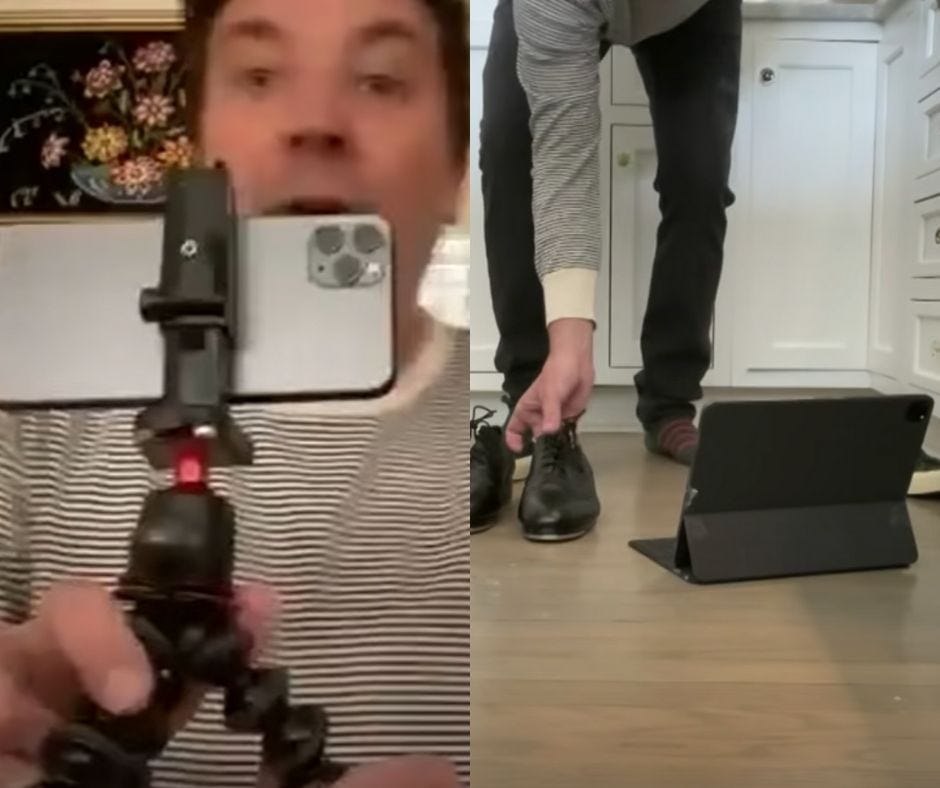It took an iPhone📱, Gorillapod and an iPad for Jimmy Fallon to shoot a video on how to make challah bread with Hugh Jackman 🍞 in April this year. But a few months earlier, the Tonight Show and Last Week Tonight with John Oliver would have never thought they’d shoot so many episodes at home. And some host even used raw mobile footage to share their thoughts, like this monologue.
Now, it’s become common. We see celebrities and journalists alike set up in their living rooms, with a bookshelf or plant in the background to add some depth and colour.
Mobile-shot TV packages have been years in the making. Mobile Journalism was coined back in 2008 to refer to content that was made on mobile phones, for audiences consuming their news primarily on mobile devices. Since then, many publications have shifted towards mobile reports. NDTV, a major TV network in India, even has sponsorship from Samsung, and sends reporters out in the field with Samsung phones. And publications like BBC also use mobile journalism or MoJo.
Some journalists have expressed concerns that mobile journalism is replacing the ‘traditional’ role of a cameraperson and video editor. But a quick look into how newsrooms are using MoJo, shows that the role of the cameraperson and video editor continue to remains crucial. And that the mobile phone is considered an additional tool for journalists to tell stories. 🤳
The key is for newsrooms to understand how and when it’s relevant to encourage reporters to use their phones when they’re out in the field. In a recent webinar for Indian journalists hosted by the Facebook Journalism Project India, freelancer Sanshey Biswas and Mongabay Digital Editor Manon Verchot spoke about the importance of knowing the limitations of every storytelling tool. For example, phones are great for in-person interviews — especially with sources unaccustomed to being on-camera. But for shooting wildlife, phones are no match for the DSLR lenses’ optical zoom.
MoJo has a different meaning to everyone who learns or teaches it. But something most agree on is that it’s the skills you need to get a story out with whatever resources are available. Not letting the lack of expensive equipment or high speed internet stop you. And that’s what a lot of creators are doing either because they can’t afford it, or are under quarantine.
At least that’s what gets people started.
Then they start realising that the footage and photos put through compressions of social media make it extremely hard and borderline impossible to tell what device something was shot on — a $10,000 camera or $1,000 phone. And eventually you realise that while a camera can get you that gorgeous closeup, marginally better than some phones, it will never be able to edit the footage as well as smartphone in 2020.
Watch out for…
There’s an upcoming webinar in the FJP India Facebook Group where you can ask Sanshey & Manon anything MoJo. This session is available to all Indian journalists. So, join the groups and set your reminders for 11 AM Wednesday!
ABOUT THIS NEWSLETTER
This newsletter is an attempt to keep up and share all the latests and greatest stories in media and how they get done. Read about it here: About In Old New-Letter
And if you were forwarded this newsletter, here’s how you can sign up to get the latest editions as they come out!


